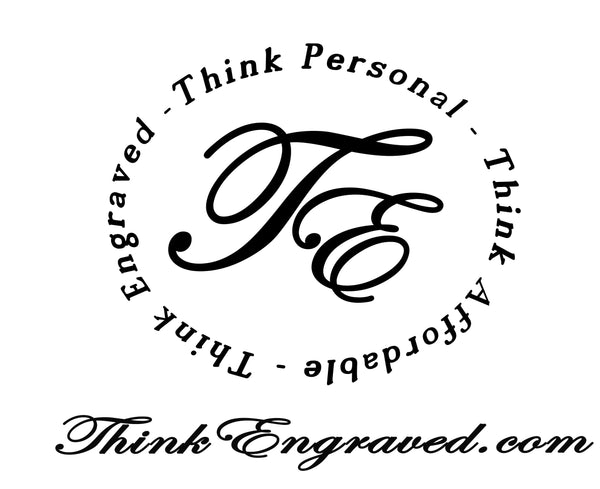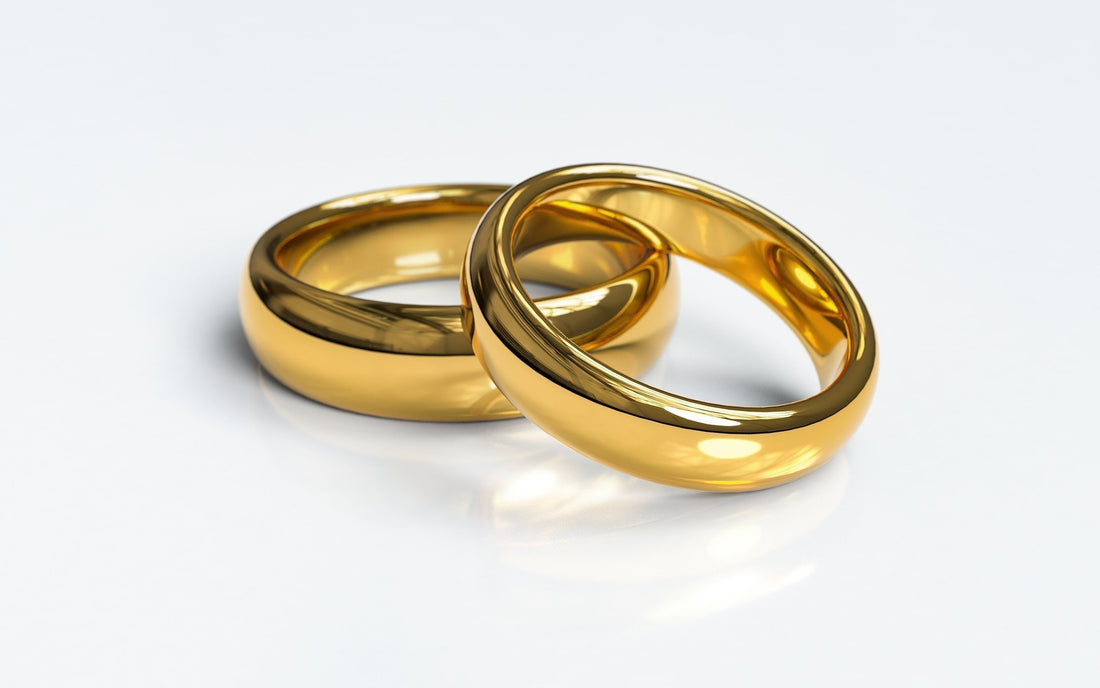
From my own experience, my wife and I bought our wedding rings from our mutual money as we had already lived together for a couple of years before we were married.
So, who pays for the wedding rings? Tradition would have the man pay for the wedding rings, but as with everything, things have changed over the years.
It has become more common for couples to live together and often they now share money earned as a whole. This has changed tradition considerably.
Be sure to read this whole article for a full breakdown from traditional to modern day norms.
Just about the only aspect of traditional weddings that remains alive today across the board is the exchange of wedding bands. People are still getting married in churches, but they’re becoming more and more adventurous for where they solidify their nuptials.
Destination weddings, barn weddings, and even camp weddings are taking over the Pinterest inspiration boards.
These celebrations are as much for the guests as they are for the couple, even though it’s paid for by the couple (or, traditionally speaking, the bride’s family.) But the couple still has to take these expenses into consideration, and there’s one teeny-tiny aspect of their big day that is sometimes unclear whose responsibility it is. The engagement ring is one thing, the wedding bands are entirely another. It’s more or less unanimously agreed upon that the engagement ring is paid for by the future groom. This is his gift to the bride and his own proposal for marriage. The gifting of the engagement ring has deep roots. It’s said that the first diamond engagement ring appeared in Austria in 1477 which was a gift from Archduke Maximilian to his wife. This diamond ring was the first of what would become a centuries-long tradition. At the time, it was the first diamond engagement ring as a way for him to show his wealth. Through the years, the idea of a top-notch engagement ring gained popularity and families began passing them down through generations. Sometimes it’s from the groom’s side, which makes it much more of a gift. Sometimes, the groom can be given, ask for, or even urged by his bride to use a ring from her side of the family. A famous instance of this is when Prince William gave Kate Middleton his late mother, Princess Diana’s ring, although hers was a blue sapphire. Even engagements of royal standards, though, the question remains: who pays for the wedding bands? It’s not quite clear whose royal estate pays for the rings (especially since Prince William doesn’t wear one), but a good guess might be as simple as whoever has the most money. This formula is one that is very commonplace now and, realistically, was done in the past even if a little more privately. It seems, quite simply, to make sense. By modern standards, relationships have changed a bit. Gone are the days of living with parents until marriage and buying a house together after the nuptials. Instead, it’s far more common that moving in together comes first, even if it is just a first apartment. At this point in a relationship, it’s quite clear that finances are easily discussed. Some couples begin sharing expenses as soon as they move in together. In some cases, there might already even be a joint bank account. If marriage is on the horizon and expenses are shared, the cost of wedding bands might then be shared also. That can go one of two ways: the bride can buy the groom’s ring while the groom buys the bride, or it can be split down the middle. For couples who are paying for their own weddings, adding the rings to the lot and splitting it down the middle is common. The parents might play a role or contribute to the wedding, but it isn’t uncommon for it to be covered by the couple. If the couple is paying for their own wedding, the question may come into play: who makes more money? In this conversation, it’s not unheard of to have the bigger breadwinner pay for the wedding bands themselves. For couples of today paying for their own weddings, it makes sense to just add it to the lot and figure out what works best for their unique setup. But what about when couples’ families decide to contribute in the traditional way? Families who agree to conduct things the old school way are far more likely to be part of the ring purchasing process. One approach suggests that the bride’s family is to pay for the wedding while the groom pays for the paperwork. For the groom, that includes the marriage license, officiant fees. The rings, engagement and both wedding bands, also fall to him. This approach makes it somewhat of a clean cut, but it still can put more of the financial burden on the bride. Their expenses include the dress, the location, the food, the transportation, the entertainment and, by modern standards, the other perks like a photo booth or a chocolate fountain. Depending also on each of the family’s financial situations, the somewhat lopsided fashion of funding may not work. There are some traditional options that don’t include family contributions that still keep the process somewhat traditional. It’s very common for there to be a displacement of income amongst the couple. Paying for the wedding may be distributed one between them, but the rings can be considered separately. There are two different approaches to this method: the romantic and the stylish. In the more romantic way, the bride and groom may simply decide to gift each other wedding bands. This makes it a personal exchange and can be seen as the gift. In another approach, the bride would buy her groom a wedding band, and the groom is responsible for buying one that matches. This gives the bride a little bit of a control over what their bands look like. This can, of course, also be done vice versa. Of course, the groom is still responsible for buying the engagement ring, which can be seen as a gift. To supplement the wedding band, the bride might also buy an additional gift of love to present to the groom. The tradition of buying each other weddings bands seems to be one of the most reasonable, long-standing, and universally-accepted approaches. Plus, it adds a loving personal touch. If you’re to be wed, it’s obvious (or at least, hopeful) that you know each other very well. Wedding bands should reflect that. Choosing one for yourself might give you the pick of the litter, but that isn’t necessarily what you want out of a wedding band. It should reflect the unity of your love in a way that both of you are connected. Buying each other’s weddings bands is the one surefire way to keep the process romantic. It’s okay to talk about it beforehand and share preferences, but getting them separately is a wonderful surprise for your special day. If they weren’t for the surprise, the bride and groom wouldn’t be able to unveil a special message. Getting the rings separately is a nice gesture for their look, but also a great opportunity to have them engraved. A personalized, engraved wedding band is an absolute treasure for the couple. It’s a small token revealing a small, subtle message that all ends up with love. While there is a lot of flexibility that goes into choosing and buying wedding bands, wearing them is a tradition that dates back for millennia. There are some accounts that suggest ancient Egyptians wove together rushes or reeds to wear to signify their union, but mostly worn by the women. A similar tradition was identified in ancient Rome, although with less sentiment. It was said that ancient Romans gave their brides rings as a memento of ownership. This would denote their dominance over their wife. Although there seems little romance in that, it's believed the Romans began the trend of engraving the rings, which is still done today and considered a grand gesture. The wedding bands are also tied to tradition set forth by the Romans. Wedding rings are now considered in the proper spot when they are one someone’s left fourth finger - or, ring finger. This ring finger was widely believed to be chosen by the Romans for its connection to the heart. It’s said the "vena armories” is found in this finger and is traced back to the heart. Vena armoris translates into “vein of love.” This, as it turns out, is just a story passed down for so long that it’s worked its way into a living legend. Still, we recognize the fourth finger as the ring finger and since men began wearing rings as a reminder of their wives while at war, the men are welcomed to join in the accessorizing. Paying for the ring is a solid truth for many people who want to have the full wedding experience, and it doesn’t quite matter who pays for it in the end. The situations may vary, and there is no right or wrong way to make it work so long as everyone is accommodated. The exchanging of rings shoot, above all, be rooted in love. Money is a big part of the picture, but shouldn’t be overshadowing the very principle of why the rings are exchanged in the first place.

